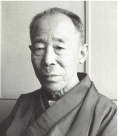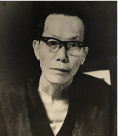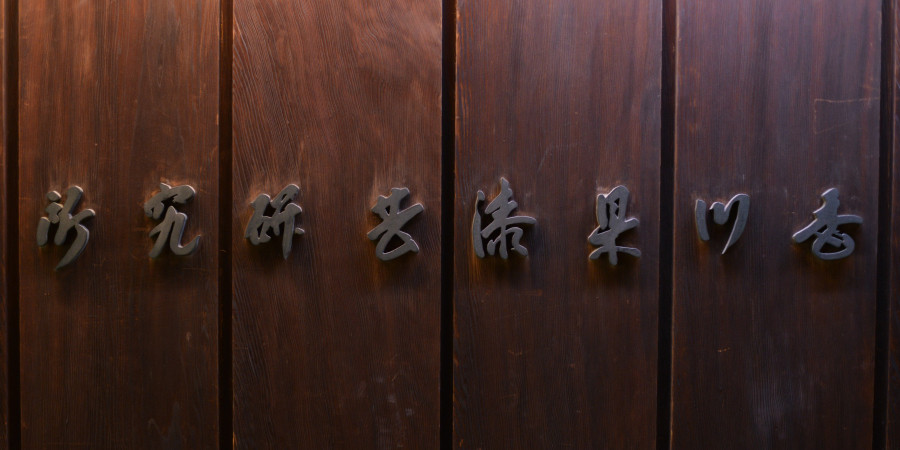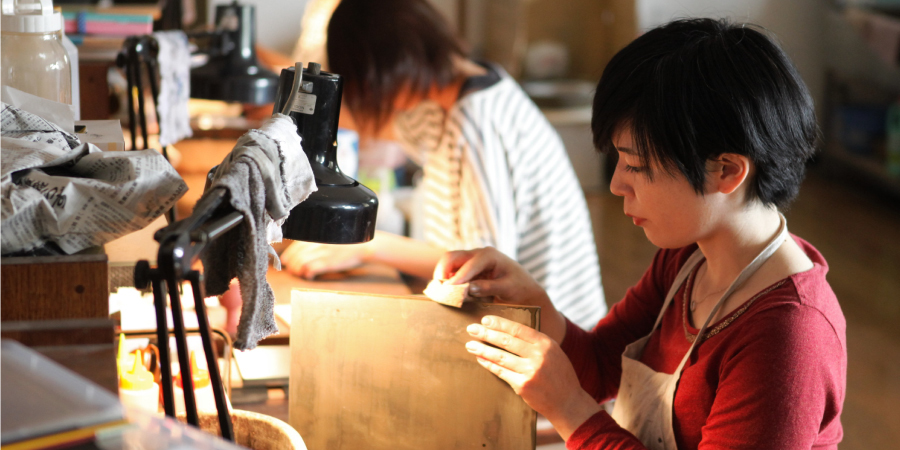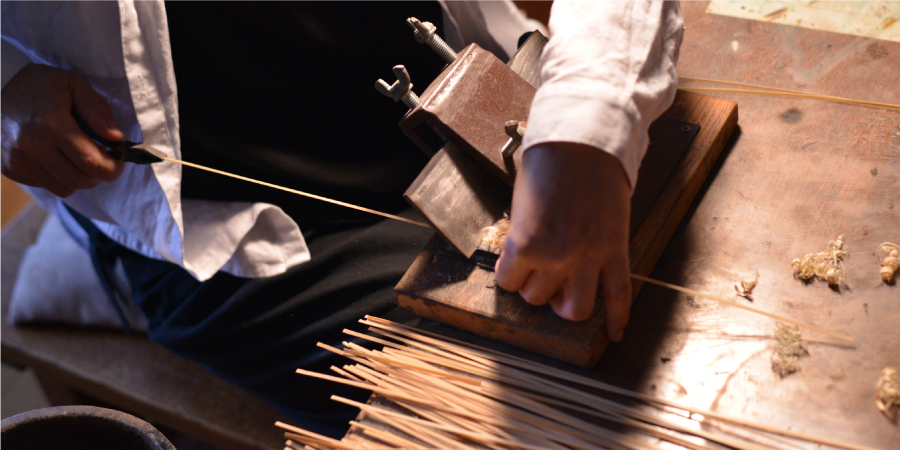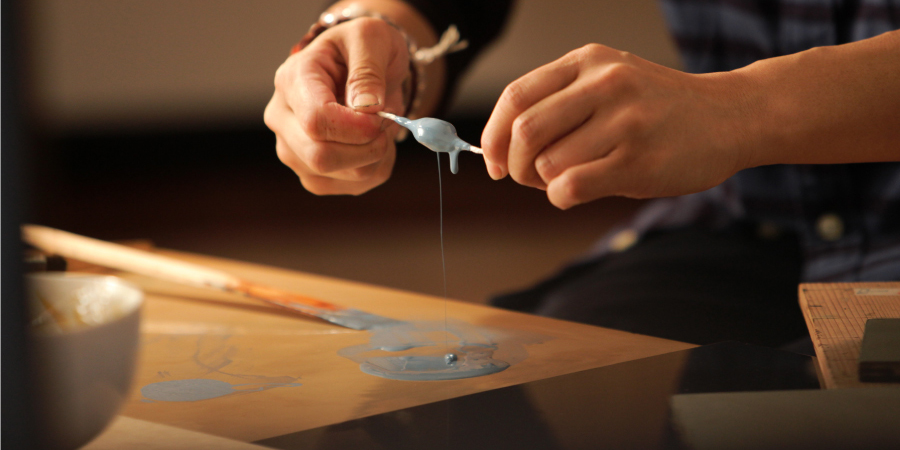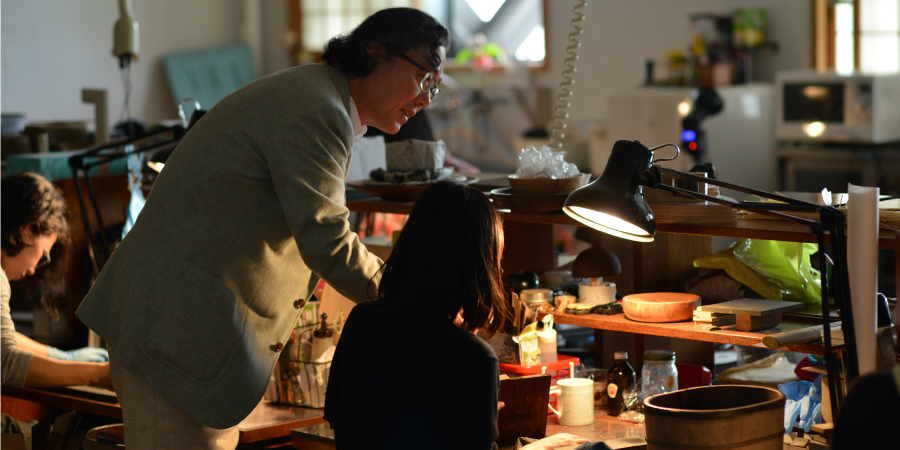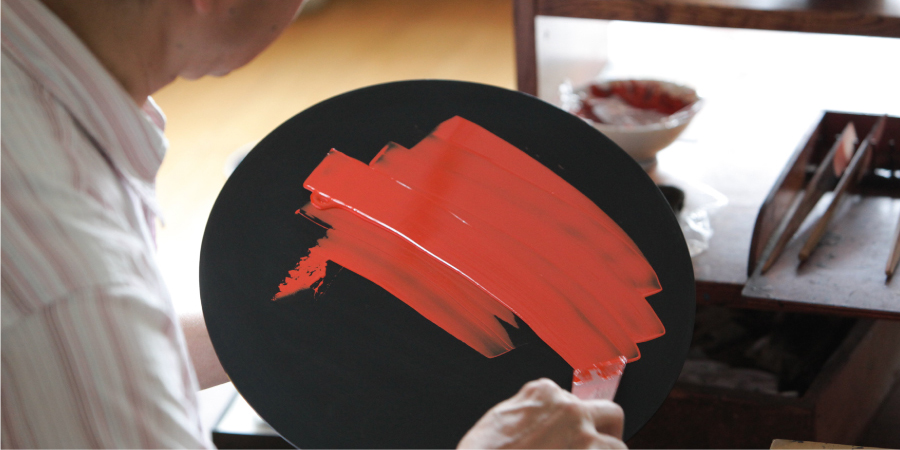 Tamakaji Zokoku
Tamakaji ZokokuWriting-paper and writing box, kinma on coloring lacquer
Collection of The Kagawa Museum

Tamakaji Zokoku was born in Takamatsu City, Kagawa, and had seen lacquerware works from countries such as China, Thailand, and Myanmar in the collections of Higashi-honganji Temple and Daitokuji Temple, among others, which stimulated his desire to create. Later, he returned to Takamatsu with knowledge of lacquerware techniques from various countries. His talent was recognized by Matsudaira Yorihiro (ninth lord of the Takamatsu Domain), and he was appointed to manage and supervise the items in the domain's treasury. He carefully observed all of these items to further develop his own skills. His studies soon paid off, and he established a distinctive Tamakaji style of urushi lacquerware techniques based on pre-existing traditional techniques. He developed a distinctive Japanese style of lacquerware after assimilating the makie lacquerware techniques of China and Southeast Asia, which were mainstream at the time. Today, these techniques which were developed in Kagawa are known as the "Three Kagawa Lacquerware Techniques", and consist of kinma, zonsei, and choshitsu.




